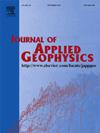FDTD analysis of ballast fouling status using PFC with discrete random medium model
IF 2.2
3区 地球科学
Q2 GEOSCIENCES, MULTIDISCIPLINARY
引用次数: 0
Abstract
Numerical simulation techniques for ground penetrating radar (GPR) railway ballast inspection offer significant advantages, including the avoidance of extensive field surveys and excavation work. This helps minimize construction challenges and costs while providing crucial technical support and insights for railway maintenance. Nevertheless, the intricate nature of ballast particles and bed structures, combined with the challenges in discerning their patterns, present formidable obstacles to achieving high-precision modeling. This paper employs the Particle Flow Code (PFC2D) to extract and project 2D natural ballast particles from laser scanning, generating a clean ballast physical model considering mechanical interactions. As fouling arises from fine particles smaller than 25 mm, the discrete random medium theory is applied to validate the heavy ballast fouling. This involves filling the voids in the clean ballast to simulate and analyze the electromagnetic properties of the ballast fouling. The generated ballast physical model is converted into HDF5 files and simulated using a 2.0 GHz Rayleigh wave excitation through the Finite Difference Time Domain (FDTD) method. Through S-transform and Hilbert energy results, it becomes feasible to accurately differentiate the ballast fouling. The study reveals that highly fouling ballast predominantly exhibits frequency energy concentrated within the 1.0–3.0 GHz range. As depth increases, the energy experiences faster attenuation, and the distribution of Hilbert energy becomes denser and stronger. Field tests conducted on a specific railway line in southern China validate the method's effectiveness, making it a valuable tool for guiding GPR-based ballast fouling detection projects and providing a scientific basis for railway infrastructure maintenance.
求助全文
约1分钟内获得全文
求助全文
来源期刊

Journal of Applied Geophysics
地学-地球科学综合
CiteScore
3.60
自引率
10.00%
发文量
274
审稿时长
4 months
期刊介绍:
The Journal of Applied Geophysics with its key objective of responding to pertinent and timely needs, places particular emphasis on methodological developments and innovative applications of geophysical techniques for addressing environmental, engineering, and hydrological problems. Related topical research in exploration geophysics and in soil and rock physics is also covered by the Journal of Applied Geophysics.
 求助内容:
求助内容: 应助结果提醒方式:
应助结果提醒方式:


